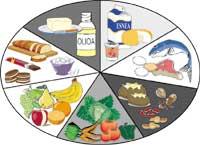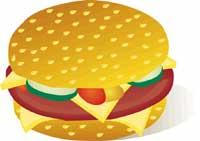Butter and margarine: what better?
1998/04/01 Lorenzo, Arantza | Uranga, Ane Miren Iturria: Elhuyar aldizkaria
The advertising messages spread by the media make many people hesitate to choose butter or margarine. Since it comes from vegetable oils and is healthier, most bet on margarine, but without taking into account that solidifying the oil produces physical-chemical changes not natural.
Butter and margarine have many similar characteristics, but also many others that are different. We will discuss the latter.
Butter comes out of milk fat. Fat is found in unstable emulsion in milk and is distinguished by two ways: the traditional in extinction and the industrial. In the first, once the cream is created, the fat is stirred. In this process total milk fat is not removed. In the industrial process milk is homogenized and becomes a more unstable emulsion. The fat is then separated by stirring milk. Finally, it should be noted that 83% of butter is a fat with low content of polyunsaturated fatty acid, but with a high content of vitamin A.
Margarine was founded in 1869 by the French chemist Mege-Maurice. It also arises at the request of Napoleon III, with the aim of satisfying his hungry soldiers by the limited production of butter at that time. Animal fats are not used for the production of margarine, the most common raw materials are coconut and palm oils hydrogenated in the laboratory and periodically other oils. Hydrogenation is the result of passing liquid emulsion oil to solid emulsion.
Since the sources and procedures of butter and margarine are different, the ingredients of nature must be differentiated. As for the components, the corresponding components are shown in the table above.
The table clearly shows that butter has more cholesterol and saturated fats than margarine. Based on this, we can say that margarine is more recommended from a nutritional point of view to avoid cardiovascular diseases without any spoon.
However, it should be noted that butter is more natural, maintains and respects the characteristics of natural fat, while in the case of margarine the nature of fats that are of liquid origin changes to offer a solid product. Therefore, it is clear that fats do not appear as they are, in their natural state.
In the end you have to choose reader. But even if we choose either, always keep in mind the recommendations below.
A couple of recommendations:
- Apply both butter and margarine, opening them occasionally on breakfast toast, but not as usual.
- If you opt for margarine, check labels well because there is a huge difference.
| Energy (kcal) | Total fat (g) | Cholesterol (mg) | Polyunsaturated fats (mg) | Monounsaturated fats (mg) | Saturated fats (mg) |
|
Butter (100g) |
752 | Services | 250 | 1.9. | 23.4. | 48,598 |
Margarine (100 g) |
752 | 83.5. | 0. | 393 | 25.3. | 14.3. |

Gai honi buruzko eduki gehiago
Elhuyarrek garatutako teknologia





